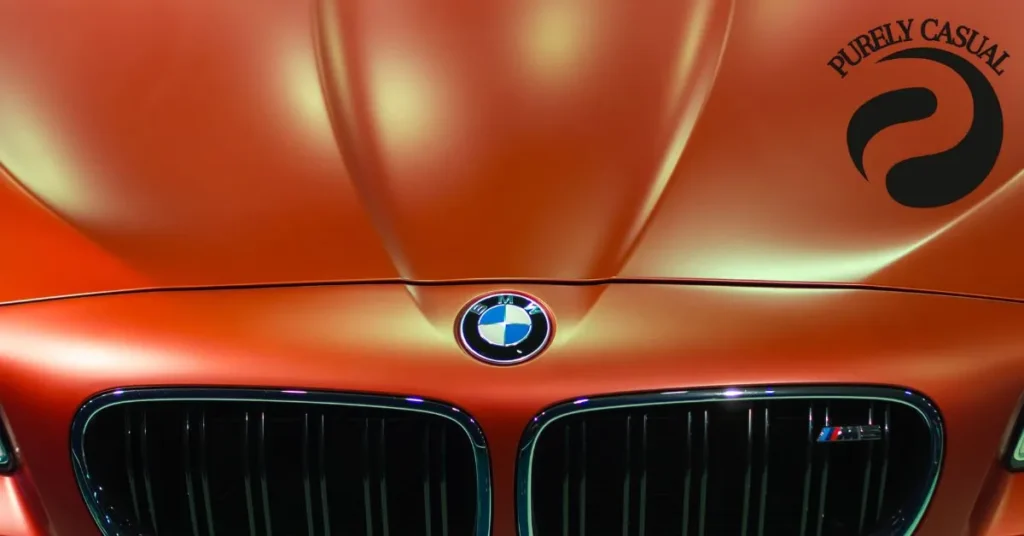The BMW E90 is a popular model, especially among car enthusiasts and DIY mechanics. This model, produced between 2005 and 2013, features the N52 engine, which is known for its reliability and performance. However, like any modern vehicle, the E90 heavily relies on its electrical system to function properly.
Fuses play a vital role in protecting the car’s electrical components from damage. They safeguard sensitive parts, such as the fuel pump and cooling fans, by breaking the circuit if there’s an overload. Among these fuses, the 40A Maxi fuse is crucial for managing high-current systems in the BMW E90.
The 40A Maxi fuse is larger and more durable than standard fuses. It can handle high currents, making it essential for certain components like the ABS system and other major electrical parts. If this fuse fails, it can lead to several electrical problems, from malfunctioning systems to the car not starting at all.
Understanding where the BMW E90 fuse box is located and how to replace fuses is key for maintaining the electrical system. The 40A Maxi fuse is often found in the main fuse box, typically located under the glove box or in the trunk. Replacing it can prevent expensive repairs and keep your car running smoothly.
This blog will guide you through everything you need to know about the 40A Maxi fuse in the BMW E90. From understanding its function to troubleshooting and replacing it, this post will help you keep your vehicle in top shape.
Table Of Contents
Understanding the 40A Maxi Fuse: What It Is and Where It’s Used
What is a Maxi Fuse?
A Maxi fuse is a type of automotive fuse designed to handle high electrical currents. It is larger than standard fuses, allowing it to carry more power. This makes Maxi fuses essential for protecting key systems in your vehicle that require high amperage, like the fuel pump and cooling fans.
The 40A Maxi fuse in the BMW E90 is specifically rated for 40 amps. It is designed to prevent electrical overloads in critical systems. If a system pulls too much current, the fuse will blow, cutting off the circuit to protect the component.
Specifications of the 40A Fuse in BMW E90
The BMW 40A Maxi fuse is easily recognizable by its orange color. Its part number is 61138367132, which helps in identifying the correct fuse for replacement. This fuse is designed to protect electrical systems that require a higher current load than smaller, standard fuses can handle.
The 40A fuse is a critical component in the BMW E90’s electrical system. Its role is to manage and protect systems such as the fuel pump, ABS system, and cooling fan. Without it, these crucial systems could be damaged by electrical overloads, leading to significant car problems.
Primary Functions in the E90 N52 Engine
In the BMW E90 N52 engine, the 40A Maxi fuse protects high-power electrical systems. The fuel pump, cooling fans, and the ABS system all rely on this fuse. Without it, these crucial systems could be damaged by electrical overloads, leading to significant car problems.
When the 40A Maxi fuse fails, you might notice several issues. These could include the car not starting, engine overheating, or the ABS system malfunctioning. Understanding its function helps you diagnose and resolve problems more quickly.
Common Signs of a Blown or Failing 40A Fuse in BMW E90
A blown 40A fuse can cause noticeable issues in your BMW E90. One common sign is the car’s electrical components failing to work, such as the fuel pump not delivering fuel. Another sign is that the engine might crank but not start, due to a malfunctioning fuel system.
If the ABS system or cooling fans stop functioning, the 40A Maxi fuse may have failed. Other warning signs include trouble codes appearing on the dashboard or a complete power loss in certain systems. When these problems occur, it’s essential to inspect the fuse and replace it if necessary.
How to Locate and Replace the 40A Maxi Fuse in a BMW E90
BMW E90 Fuse Box Location
The BMW E90 fuse box is the main hub for controlling electrical circuits in your vehicle. In most models, the fuse box is located under the glove box on the passenger side. Some versions may also have a second fuse box in the trunk, near the battery compartment.
To access the fuse box under the glove box, you will need to remove the plastic panel. This can usually be done by unscrewing a few screws or using a trim removal tool. Once removed, you will see the various fuses, including the 40A Maxi fuse.
Tools and Materials Required for Fuse Replacement
Before starting the replacement process, you’ll need a few basic tools. A fuse puller or a pair of needle-nose pliers will help you remove the old fuse safely. You’ll also need a new 40A Maxi fuse, which can be purchased from reputable sources.
It’s a good idea to have a BMW E90 fuse diagram handy, which can usually be found in the owner’s manual or online. This will help you identify the exact position of the 40A fuse in the fuse box. Having a multimeter is also helpful for checking whether the fuse is blown.
Step-by-Step BMW N52 Fuse Replacement Process
- Disconnect the battery: Before working with the fuses, disconnect the car battery to avoid any electrical shorts. This is a crucial safety step.
- Locate the 40A Maxi fuse: Using the BMW E90 fuse diagram, find the 40A Maxi fuse in the fuse box. It will be marked clearly, and its orange color helps distinguish it.
- Remove the old fuse: Use the fuse puller or pliers to carefully remove the old 40A fuse. Check if the metal strip inside is broken, which indicates it’s blown.
- Install the new fuse: Insert the new 40A Maxi fuse into the same slot, ensuring it’s securely in place. Make sure the new fuse has the same amperage rating (40A).
- Reconnect the battery: After replacing the fuse, reconnect the battery and test the system to see if the problem is resolved.
Safety Precautions When Replacing BMW E90 Fuses
Safety is key when working with the electrical system of your BMW E90. Always disconnect the car battery before starting any work. This helps prevent accidental shocks or shorts that could damage the electrical system or cause injury.
Ensure you are using the correct 40A Maxi fuse with the proper specifications. Using the wrong fuse can lead to overheating and further electrical damage. If you’re unsure, consult your owner’s manual or seek professional advice.
When to Seek Professional Help for BMW E90 Fuse Issues
While replacing a fuse is generally straightforward, some issues might require expert help. If the 40A Maxi fuse keeps blowing after replacement, it may indicate a deeper electrical problem. In such cases, it’s best to take your car to a professional mechanic.
Additionally, if you are unfamiliar with working on the electrical system, seeking assistance is recommended. Incorrect handling of fuses and circuits can lead to further damage or costly repairs.
Where to Buy Reliable 40A Maxi Fuses: Best Options for BMW E90 Owners
OEM vs. Aftermarket BMW Fuses
When replacing the 40A Maxi fuse in your BMW E90, you have two main options: OEM (Original Equipment Manufacturer) or aftermarket fuses. OEM BMW fuses are made by the same manufacturer that supplies BMW, ensuring perfect compatibility. Aftermarket fuses are produced by third-party companies, which may offer lower prices but can vary in quality.
Using an OEM fuse guarantees you are getting a fuse that meets the exact specifications for your car. Aftermarket fuses can be reliable if purchased from a trusted brand, but it’s important to ensure they meet BMW fuse compatibility standards. Always check reviews and ratings when purchasing aftermarket fuses.
Cost Comparison: OEM and Aftermarket 40A Fuses
The cost of an OEM BMW 40A Maxi fuse is typically higher than an aftermarket option. For example, an OEM fuse might cost around $8.38, as seen on platforms like eBay. Aftermarket options can be cheaper but may vary in reliability.
While the price difference can be significant, it’s important to prioritize quality. A low-cost fuse that fails early could cause more expensive damage to your car’s electrical system. Balancing cost with quality ensures you’re making the right choice for your BMW E90.
Top Online Retailers for BMW 40A Fuses
There are several reliable online stores where you can purchase a 40A Maxi fuse for your BMW E90. eBay is a popular platform, offering both OEM and aftermarket BMW fuses. Other options include Amazon, BMW parts stores, and dedicated automotive supply websites.
When buying online, always check the seller’s reputation and reviews. Stick to well-rated sellers to avoid counterfeit or poor-quality fuses. Be sure the part number 61138367132 matches your required fuse.
What to Look for in a Replacement BMW Fuse
When buying a replacement 40A fuse, the first thing to check is the amperage rating. It should be a 40A fuse, as using a different amperage can lead to electrical problems. Also, check if the fuse is labeled as a Maxi fuse, as these are designed to handle higher currents.
Make sure the fuse has the same specifications as the original one in your BMW E90. Look for OEM BMW fuses when possible, or choose high-quality aftermarket brands. Ensuring compatibility will keep your car’s electrical system running smoothly.
Avoiding Low-Quality or Counterfeit Fuses
Low-quality or counterfeit fuses can be dangerous for your BMW E90. These fuses may not blow properly, leading to potential damage to electrical components. Common signs of counterfeit fuses include unusually low prices, poor packaging, or lack of proper labeling.
To avoid counterfeit fuses, only buy from reputable sellers or well-known retailers. Always inspect the fuse upon arrival to make sure it matches the description. By choosing a reliable, well-made 40A Maxi fuse, you protect your BMW E90 from potential electrical problems.
Preventive Maintenance and Troubleshooting: Keeping Your BMW E90 Electrical System Healthy
Routine Fuse Checks and Electrical Maintenance for BMW E90
Regularly checking the fuses in your BMW E90 can prevent major electrical issues. Inspect the BMW E90 fuse list to ensure all fuses are in good condition. Replace any that show signs of wear or damage to avoid electrical problems before they happen.
Routine checks should include inspecting high-current fuses like the 40A Maxi fuse. By maintaining your fuses, you can prevent sudden failures in critical systems like the fuel pump or cooling fans. This simple maintenance can save you from costly repairs in the future.
Diagnosing Electrical Problems in BMW E90 Before They Escalate
If your BMW E90 experiences electrical issues, diagnosing them early is crucial. Use a multimeter to check whether a fuse is blown, starting with the 40A Maxi fuse. Common electrical problems in BMW E90 N52 engines include engine starting issues or malfunctioning systems like the ABS.
Addressing these problems quickly helps avoid further damage. If the 40A fuse continues to blow after replacement, it may indicate a deeper electrical issue. In this case, it’s important to seek professional help before the problem worsens.
Common Electrical Problems in BMW E90 N52 Engines
Some of the most common electrical problems in the BMW E90 N52 engine include issues with the fuel pump, cooling fan, and ABS system. These problems are often linked to the 40A Maxi fuse. A blown fuse can stop these systems from functioning, causing significant disruptions.
Another common issue is battery drain, which can be related to faulty wiring or fuse problems. If electrical problems are recurring, it may be time to inspect your fuses and wiring. Regular maintenance and quick troubleshooting can prevent more serious electrical failures.
Tips for Extending the Life of BMW E90 Fuses and Electrical Components
To extend the life of your BMW E90 fuses, avoid overloading your car’s electrical system. Installing too many aftermarket accessories can put additional strain on the fuses, especially high-current ones like the 40A Maxi fuse. It’s important to use high-quality components that match the vehicle’s specifications.
Another way to extend fuse life is to ensure that all electrical connections are secure. Loose connections can lead to electrical surges that damage fuses. Regularly checking these connections will help maintain a stable electrical system.
When to Upgrade Electrical Components in a BMW E90
In some cases, upgrading your car’s electrical components may be necessary. Older vehicles or those with extensive aftermarket modifications might benefit from upgraded wiring or fuses. If you frequently experience blown fuses or other electrical issues, it might be time to consider stronger components.
You can upgrade to higher-quality Maxi fuses or replace worn-out wiring to improve the reliability of your BMW E90’s electrical system. This can help prevent future issues, especially if your car has undergone significant upgrades or modifications.
Conclusion
Maintaining the electrical system of your BMW E90 is crucial for its overall performance and reliability. The 40A Maxi fuse plays an important role in protecting key systems like the fuel pump, ABS, and cooling fans from electrical overload. Regularly inspecting and replacing this fuse when necessary can prevent major issues and expensive repairs.
Understanding where the fuse is located and how to replace it can save you time and money. Whether you choose to replace the fuse yourself or seek professional help, always prioritize using quality parts, such as OEM BMW fuses. By taking preventive measures and performing routine electrical checks, you can keep your BMW E90 running smoothly for years to come.
FAQs
What is a 40A Maxi fuse, and why is it important?
A 40A Maxi fuse is a type of automotive fuse designed to handle high electrical currents. It is important because it protects critical electrical systems in your BMW E90, such as the fuel pump and cooling fans, from overloads that could cause damage.
Where is the fuse box located in the BMW E90?
The fuse box in the BMW E90 is typically located under the glove box on the passenger side. There may also be an additional fuse box in the trunk near the battery. Always refer to your owner’s manual for exact locations.
How do I know if my 40A Maxi fuse is blown?
A blown 40A Maxi fuse can cause electrical components to stop working, such as the fuel pump not delivering fuel. If the car cranks but doesn’t start, or if you notice warning lights on the dashboard, it may be time to check the fuse. You can visually inspect the fuse or use a multimeter to test for continuity.
Can I replace the 40A Maxi fuse myself?
Yes, you can replace the 40A Maxi fuse yourself. Ensure you disconnect the battery first for safety. Use a fuse puller to remove the old fuse and insert a new one with the same amperage rating.
Should I use OEM or aftermarket fuses?
It is generally recommended to use OEM (Original Equipment Manufacturer) fuses for your BMW E90 to ensure compatibility and reliability. However, high-quality aftermarket fuses can also be a cost-effective option if they meet the same specifications.
How often should I check my fuses?
You should check your fuses regularly as part of routine maintenance. It’s a good practice to inspect them during oil changes or whenever you notice electrical issues. Regular checks can help you identify problems before they escalate.
What should I do if the 40A Maxi fuse keeps blowing?
If the 40A Maxi fuse keeps blowing after replacement, it indicates a deeper electrical issue. You should check for faulty wiring or components that may be drawing excessive current. In this case, it is advisable to seek professional help to diagnose and fix the problem.
Can I upgrade the electrical components in my BMW E90?
Yes, upgrading electrical components like wiring or fuses can improve reliability, especially if your vehicle has many aftermarket modifications. However, make sure that any upgrades are compatible with your vehicle’s specifications to avoid further issues.







